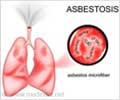Nanoparticles of nickel activate a cellular pathway that may contribute to human lung cancer, reveals research.

Kane is the senior author of the study published in advance online this month in the journal Toxicological Sciences.
Nickel nanoparticles had already been shown to be harmful, but not in terms of cancer. Kane and her team of pathologists, engineers and chemists found evidence that ions on the surface of the particles are released inside human epithelial lung cells to jumpstart a pathway called HIF-1 alpha. Normally the pathway helps trigger genes that support a cell in times of low oxygen supply, a problem called hypoxia, but it is also known to encourage tumor cell growth.
"Nickel exploits this pathway, in that it tricks the cell into thinking there's hypoxia but it's really a nickel ion that activates this pathway," said Kane, whose work is supported by a National Institues of Health Superfund Research Program Grant. "By activating this pathway it may give premalignant tumor cells a head start."
Size matters
The research team, led by postdoctoral research associate and first author Jodie Pietruska, exposed human lung cells to nanoscale particles of metallic nickel and nickel oxide, and larger microscale particles of metallic nickel. A key finding is that while the smaller particles set off the HIF-1 alpha pathway, the larger metallic nickel particles proved much less problematic.
Advertisement
Another important result from the work is data showing a big difference in how nickel nanoparticles and nickel oxide nanoparticles react with cells, Pietruska said. The nickel oxide particles are so lethal that the cells exposed to them died quickly, leaving no opportunity for cancer to develop. Metallic nickel particles, on the other hand, were less likely to kill the cells. That could allow the hypoxia pathway to lead to the cell becoming cancerous.
Advertisement
Although Kane said the findings should raise clear concerns about handling nickel nanoparticles, for instance to prevent airborne exposure to them in manufacturing, they are not all that's needed to cause cancer. Cancer typically depends on a number of unfortunate changes, Kane said. Also, she said, the study looked at the short-term effects of nickel nanoparticle exposure in cells in a lab, rather than over the long term in a whole organism.
Still, in her lab Kane employs significant safeguards to keep researchers safe.
"We handle all these materials under biosafety level 2 containment conditions," she said. "I don't want anyone exposed. We're handling them as though they were an airborne carcinogen."
Source-Eurekalert














